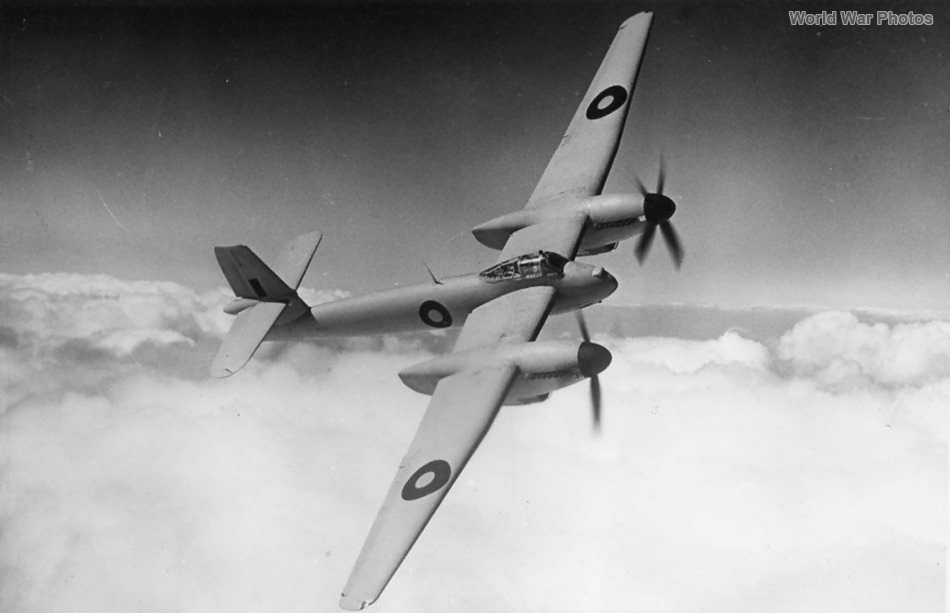The Genesis of a High-Altitude Fighter: The Air Ministry’s Motivation in 1940
The Air Ministry’s decision to develop a high-altitude fighter in 1940 stemmed from a combination of factors, primarily driven by the perceived threat of German high-altitude bombers and reconnaissance aircraft and a growing interest in the potential of pressure cabin technology.
The Ju 86P Threat: The appearance of the Junkers Ju 86P, a high-altitude pressurized bomber and reconnaissance aircraft, over England in September 1942, sparked significant concern within Fighter Command. Although the Ju 86P ultimately proved ineffective and was withdrawn from service, its initial overflights exposed a critical vulnerability in Britain’s air defenses. The RAF lacked aircraft capable of intercepting aircraft operating at the altitudes reached by the Ju 86P, making it virtually immune to attack. This realization, coupled with the fear of future high-altitude attacks, prompted a renewed focus on developing a specialized high-altitude interceptor.
Early Interest in Pressure Cabins: The concept of a high-altitude fighter wasn’t entirely new in 1940. Growing interest in pressure cabin technology in the years leading up to World War II, both in Britain and internationally. This interest stemmed from the realization that pressure cabins would be crucial for enabling flight at altitudes where oxygen and atmospheric pressure were insufficient to sustain human life. In Britain, General Aircraft Ltd had been at the forefront of pressure cabin experimentation, even flying a modified S.T.25 Universal light twin-engined tourer equipped with a pressure cabin in 1938— the first British aircraft to do so.
The General Aircraft GAL 46 Catalyst: While General Aircraft’s initial foray into pressure cabins with the S.T.25 was primarily experimental, the company’s subsequent private-venture design for a “stratosphere fighter,” the GAL 46, played a significant catalytic role in influencing the Air Ministry’s thinking on high-altitude fighters. Although the GAL 46, a twin-engine shoulder-wing monoplane powered by Rolls-Royce Merlin engines, was deemed impractical for military use, it ignited a spark of interest within the Air Ministry, leading them to formally explore the requirements for a dedicated high-altitude fighter. This ultimately led to the drafting of Specification F.4/40 in the spring of 1940.
Pressure Cabin Technology Matures: Concurrent with the perceived threat of the Ju 86P and the influence of designs like the GAL 46, the field of pressure cabin technology was maturing rapidly in the late 1930s and early 1940s. This was partly driven by the increasing altitudes at which aircraft were capable of flying, necessitating a means to protect pilots from the physiological effects of low pressure and oxygen levels. By 1940, several British companies, including General Aircraft, Vickers-Armstrongs, and Westland, were actively researching and experimenting with pressure cabin designs.
The Gloster Meteor as a Potential Solution: While the Air Ministry was formulating its requirements for a high-altitude fighter under Specification F.4/40, a parallel development was underway that held even greater promise: the Gloster Meteor, Britain’s first jet aircraft. The Meteor, conceived in response to Specification F.9/40, was expected to possess both exceptional high-altitude capabilities and superior performance compared to its piston-engined counterparts. Although the Meteor did not initially incorporate a pressure cabin (relying instead on pressure suits for the pilot), its potential as a high-altitude interceptor was recognized.
The Welkin as Insurance: The emergence of the Gloster Meteor, while promising, did not diminish the urgency to develop a piston-engined high-altitude fighter. The Welkin, therefore, came to be viewed as an “insurance policy” in case the radical and unproven jet technology of the Meteor encountered setbacks or failed to meet expectations. This dual-pronged approach, pursuing both piston-engined and jet-powered solutions, highlights the Air Ministry’s determination to address the perceived threat of high-altitude attack by any means necessary.
In conclusion, the Air Ministry’s decision to develop a high-altitude fighter in 1940 was a direct response to the perceived vulnerability exposed by the Junkers Ju 86P overflights, fueled by a growing interest in pressure cabin technology and a determination to explore every avenue for countering the threat of high-altitude attack. The Welkin, while ultimately overshadowed by the jet age, played a crucial role in advancing pressure cabin technology and served as a vital stepping stone in British aviation’s journey toward conquering the stratosphere.
